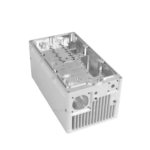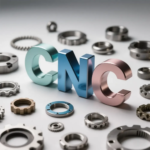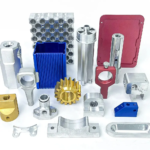Understanding R+W Couplings
R+W couplings are indispensable components in various industrial applications, serving to connect shafts and maintain effective power transmission. Their design is optimized for minimizing backlash and ensuring high torque capacity while absorbing vibrations. Proper care and maintenance of these couplings can significantly enhance their lifespan and reliability, leading to more efficient operations. This article delves into the essential practices for ensuring your R+W coupling remains in excellent condition.
Common Applications of R+W Couplings
Before discussing care and maintenance, it’s important to understand where R+W couplings are typically utilized. They are widely found in:
- Automotive Engineering: Connecting transmission shafts and drive systems.
- Manufacturing Equipment: Integrating motors with machinery in production lines.
- Robotics: Used in servo drives for accurate motion control.
- Medical Equipment: Linking motors and actuators in sophisticated medical devices.
In these scenarios, the reliability of R+W couplings directly influences the performance and safety of the equipment involved.
Importance of Care and Maintenance
Maintaining the integrity of R+W couplings is vital for several reasons:
- Prolonged Lifespan: Regular maintenance can reduce wear and tear, thereby extending the life of the coupling.
- Operational Efficiency: A well-maintained coupling supports smoother operations, reducing energy waste.
- Safety: In industrial environments, coupling failures can lead to machinery breakdowns, posing safety risks.
By adhering to a rigorous care and maintenance routine, businesses can mitigate these risks and ensure smooth operational flow.
Routine Inspections
Frequency of Inspections
Routine inspections are the backbone of any effective maintenance strategy. Depending on the application and operational conditions, it’s advisable to carry out inspections at regular intervals. For example, high-demand applications may necessitate weekly checks, while less intensive uses could warrant bi-monthly inspections.
What to Inspect
During inspections, focus on the following aspects:
Visual Examination: Check for any signs of wear, such as cracking, corrosion, or deformation. Look for grease leaks or discoloration, which may indicate overheating or contamination.
Alignment Checks: Misalignment can lead to premature failure. Ensure that the coupling aligns correctly, as specified by the manufacturer.
- Torque Verification: Ensure that the torque settings are consistent with the manufacturer guidelines. Over-tightening can damage bolts, while undertightening may result in slippage.
Using Diagnostic Tools
For more precise evaluations, consider using diagnostic tools such as vibration analysis equipment. These tools can detect early signs of coupling fatigue, enabling maintenance before failure occurs.
Cleaning Procedures
Importance of Cleaning
Regular cleaning is crucial for maintaining the operational integrity of R+W couplings. Dirt and debris can accumulate, leading to friction, overheating, or even mechanical failure.
Cleaning Methods
- Dry Cleaning: Use a soft brush or compressed air to remove loose dirt and dust.
Wet Cleaning: For stubborn residues, employ a damp cloth with mild detergents. Avoid harsh chemicals that may corrode the coupling material.
- Inspection Post-Cleaning: Always conduct a thorough inspection after cleaning. Look for any changes in the coupling’s condition that may have been obscured by dirt.
Lubrication
Lubrication Requirements
Proper lubrication is essential for minimizing friction and preventing wear. R+W couplings often have specific lubrication requirements based on their operational speed and load conditions.
Types of Lubricants
Grease: Generally preferred for low-speed applications due to its excellent adhesion properties.
- Oil: More suitable for high-speed applications, as it effectively reduces heat build-up.
Lubrication Frequency
The lubrication schedule should align with the operational demands of the coupling. A common practice is to apply grease every three to six months for standard applications, while more frequent lubrication may be required for high-stress environments.
Secure Fastening
Importance of Tightening Bolts
The coupling’s performance hinges on secure fastening. Loose bolts can lead to vibration, misalignment, and eventual failure.
Best Practices for Fastening
Use Torque Wrench: Always use a calibrated torque wrench to ensure the bolts are tightened to the specified torque settings.
Regular Monitoring: Include bolt tension in your routine inspections. Check the torque in sequence to prevent uneven pressure distribution.
- Replace Damaged Hardware: Any signs of damage to bolts or fastening elements should be addressed immediately. Replace these components rather than attempting repairs.
Environmental Considerations
Influence of Operating Environment
The environment where the R+W coupling operates can significantly influence its longevity. Factors such as temperature, humidity, and exposure to chemicals or corrosive materials should be taken into account.
Protective Measures
Sealing Options: Install seals or covers to protect the coupling from contaminants.
Ventilation: Ensure adequate airflow around the coupling to dissipate heat, especially in high-load scenarios.
- Temperature Monitoring: In extreme operating conditions, consider temperature monitoring systems to prevent overheating.
Troubleshooting Common Issues
Signs of Wear
Unusual Noises: Grinding or chirping sounds may indicate wear.
Overheating: Excessive heat can signify inadequate lubrication or misalignment.
- Vibration: Increased vibration levels could point to imbalance or deterioration.
Response to Issues
Addressing these issues promptly is critical. Stop operations immediately to inspect the coupling, and take corrective measures based on the findings. This could involve realignment, lubrication, or tighter fastening, depending on the issue.
Engaging with Professionals
When to Seek Expert Help
While routine maintenance can often be managed in-house, certain situations warrant the expertise of professionals. If you encounter persistent issues that don’t resolve with standard troubleshooting, or if you lack the necessary tools for proper inspection, it might be time to seek specialized services.
Building Relationships
Establishing relationships with skilled technicians can lead to more robust maintenance strategies, providing insights into the nuances of R+W coupling care that you may not have considered.
Concluding Remarks
Effective care and maintenance of R+W couplings are instrumental in ensuring their reliability and operational efficiency. By committing to routine inspections, thorough cleaning, proper lubrication, secure fastening, and being mindful of the operating environment, you can safeguard your investment and enhance productivity.
In the dynamic world of industrial applications, a proactive approach toward maintenance is invaluable. Implementing these practices will not only serve to prolong the life of R+W couplings but will also optimize the performance of entire systems, contributing to a smoother and safer operational environment.
Daguang focuses on providing solutions such as precision CNC machining services (3-axis, 4-axis, 5-axis machining), CNC milling, 3D printing and rapid prototyping services.










